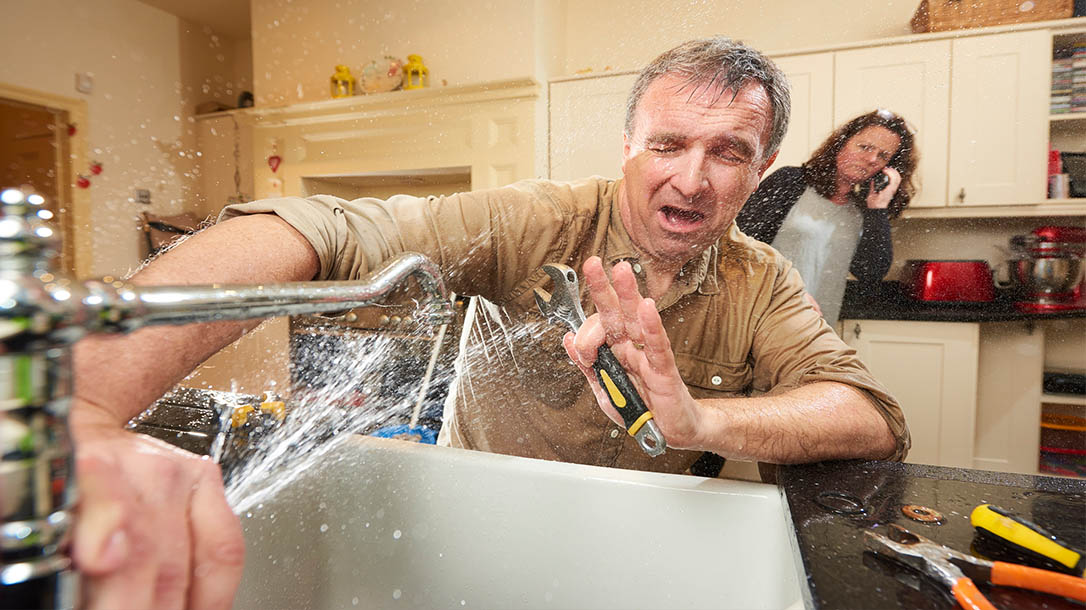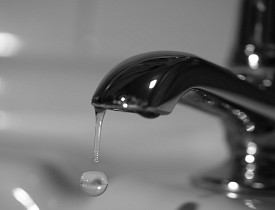When It's Necessary to Fix a Dripping Faucet
When It's Necessary to Fix a Dripping Faucet
Blog Article
Each person seems to have their own unique concepts with regards to Why Are My Faucets Dripping (And Can I Fix It Myself)?.

Dripping faucets might look like a small hassle, but their influence goes beyond simply the inconvenience of the sound. From wasting water to incurring unnecessary economic expenses and health and wellness dangers, ignoring a trickling faucet can lead to various consequences. In this short article, we'll delve into why it's important to address this typical household concern immediately and successfully.
Wastage of Water
Ecological Effect
Leaking faucets add substantially to water wastage. According to the Epa (EPA), a solitary tap leaking at one drip per secondly can throw away greater than 3,000 gallons of water annually. This not only stress water sources but also influences environments and wild animals based on them.
Financial Costs
Raised Water Costs
Past the ecological impact, dripping taps can blow up water costs considerably. The built up wastage with time translates right into higher energy expenditures, which might have been stayed clear of with prompt repair services.
Possible Residential Or Commercial Property Damages
Additionally, extended trickling can cause harm to components and surface areas surrounding the faucet. Water buildup can cause staining, rust, and even structural concerns if left unattended, leading to extra repair work prices.
Wellness Issues
Mold And Mildew and Mold Growth
The consistent visibility of wetness from a leaking tap produces an ideal setting for mold and mildew development. These fungis not just endanger indoor air top quality yet also present health risks, particularly for people with respiratory system conditions or allergies.
Waterborne Conditions
Stationary water in leaking taps can become a breeding place for microorganisms and other virus, increasing the risk of waterborne diseases. Pollutants such as Legionella bacteria grow in stagnant water, possibly leading to severe diseases when ingested or inhaled.
Do it yourself vs. Professional Repair service
Advantages and disadvantages of DIY Repair Service
While some might attempt to deal with a trickling tap themselves, DIY fixings include their very own set of difficulties. Without appropriate expertise and tools, do it yourself efforts can exacerbate the problem or cause insufficient repairs, prolonging the problem.
Advantages of Employing an Expert Plumber
Employing an expert plumber guarantees that the underlying root cause of the leaking faucet is attended to effectively. Plumbings have the knowledge and devices to detect and repair faucet problems efficiently, conserving time and reducing the danger of more damages.
Step-by-Step Overview to Fixing a Dripping Tap
Tools Required
Prior to attempting to take care of a dripping tap, collect the necessary devices, including an adjustable wrench, screwdrivers, substitute components (such as washing machines or cartridges), and plumber's tape.
Usual Tap Issues and Their Solutions
Recognize the type of faucet and the specific concern creating the drip. Usual problems include worn-out washing machines, rusty valve seats, or malfunctioning O-rings. Describe supplier directions or on-line tutorials for step-by-step assistance on repair services.
Preventive Measures
Routine Upkeep Tips
To stop dripping faucets, execute regular upkeep such as cleaning up aerators, checking for leakages, and replacing worn-out components without delay. In addition, think about setting up water-saving devices or upgrading to more reliable fixtures.
Importance of Prompt Fixes
Attending to dripping taps as soon as they're noticed protects against further water waste and prospective damages, eventually conserving both water and cash in the future.
Effect On Residential Or Commercial Property Value
Assumption of Well-Maintained Residential Property
Keeping a building in good condition, including resolving maintenance issues like leaking taps, improves its viewed worth and charm amongst prospective customers or occupants.
Impact on Resale Value
Features with properly maintained plumbing fixtures, consisting of taps, command higher resale values in the real estate market. Addressing dripping faucets can add to a favorable impression during residential or commercial property examinations and arrangements.
Environmental Responsibility
Private Payment to Conservation
Taking duty for dealing with leaking taps aligns with more comprehensive initiatives towards water preservation and ecological sustainability. Every person's actions jointly make a significant influence on maintaining valuable sources.
Sustainable Living Practices
By prioritizing punctual repair services and taking on water-saving behaviors, individuals contribute to lasting living techniques that profit both existing and future generations.
Final thought
Dealing with a dripping faucet exceeds mere benefit; it's an important step toward preserving water, reducing financial expenses, and securing health and wellness and residential property. Whether through do it yourself repair services or professional help, doing something about it to deal with trickling faucets is a tiny yet impactful method to promote liable stewardship of sources and contribute to a healthier, much more sustainable future.
How to Fix a Leaky Faucet: Step-by-Step Repair Guide
A leaky faucet may seem like a simple annoyance, but if it's not fixed promptly, that leak could cost hundreds to potentially thousands. From water damage to mold, mildew, and high water bills, even a tiny leak can be catastrophic if left unattended. Damage like this can even affect the overall value of your home, so it's important to take the right approach for leaky faucet repair. You may need the help of a plumber in some cases, but we've got a few tips you can try on how to fix a leaky faucet before calling the pros.
Four Faucet Types
When you're learning how to fix a leaky faucet, the first step is knowing what kind of faucet you're working with! There are four common types.
Cartridge Faucets
Cartridge faucets come in one- or two-handled varieties. In one-handled cartridge faucets, hot and cold water combines in a single cartridge. In the two-handled versions, hot and cold water are controlled separately and mixed in the faucet.
Ball Faucets
Ball faucets have a single lever you push up and down to adjust the pressure and rotate to change the temperature. A slotted metal ball controls the amount of water allowed into the spout.
Compression Washer Faucets
They're the oldest type of faucet, but they're still used in many homes — especially older ones. Compression faucets have two separate handles that, when turned, raise or lower the washer that seals a water valve. This valve stops water from flowing through the faucet when it is turned off.
Disc Faucets
Disc faucets rarely need to be repaired due to their maintenance-free design. The water flow is controlled by two discs — the upper one raises and lowers against a fixed lower disc, creating a watertight seal. If your disc faucet starts leaking, you may need to replace the seals or clean residue buildup from the inlets.
Fixing a Leaky Faucet
Step 1: Turn Off the Water
Whether you're learning how to fix a leaky bathtub faucet or how to fix a leaky kitchen faucet, always turn off the water supply to your working area when you're fixing a leak. The last thing you want is a flood added to your list of things to fix.
Look for the shutoff valves below your sink or around the tub and turn them clockwise to stop the water flow. If your faucet doesn't have shutoff valves, you may need to turn off the water for the whole house. Check to make sure it's off by turning the faucet on. If nothing comes out, you're ready to start the repair.
Step 2: Take Apart the Faucet
How you disassemble your faucet depends on the type of fixture you have. You can use a flathead screwdriver to remove the caps on top of the handle or handles for cartridge and compression faucets. Inside, you should see handle screws. Unscrew these with a screwdriver to remove the handle.
Disc- and ball-style faucets will typically have an inlet screw near the handle, and removing that will reveal the interior of the faucet.
Detach the Valve Stem
For cartridge- and compression-style faucets, you'll see the inner valve stem or cartridge once you remove the faucet handles. If you have a compression faucet, unscrew the brass valve stem. If you have a cartridge faucet, pull out the cartridge. If your cartridge has been in place for a while, it may require some tools or extra force to remove it due to mineral deposits.
Examine and Replace Parts
Once you've removed the parts, check them out to confirm what needs to be replaced. You may see corroded rubber washers, O-rings, stems, or cartridges. On a ball-style faucet, check the seats and springs for damage.
If you need to repair a leaky disc faucet, check the inlet and seals on the lower disc.
Once you determine what parts must be replaced, visit your local hardware store. Bring the damaged parts with you to ensure you can purchase the correct components to replace them.
Clean Valves and Faucet Cavity
If you've removed a stem or cartridge, you may notice mineral buildup in the faucet's threads. Use white vinegar to clean the valve seat by soaking it for a few minutes, then scrub it away with a soft toothbrush and rinse with warm water. You can also clean the interior of the faucet in the same way.
Reassemble the Faucet
Once your faucet is cleaned and the required parts have been replaced, it's time to reassemble it. Put the pieces back together and slowly turn the water supply back on. Doing this slowly is crucial because too much initial water pressure can damage the new hardware you've just installed.
https://homewarranty.firstam.com/blog/how-to-fix-leaky-faucet

Hopefully you enjoyed reading our article on Why Are My Faucets Dripping (And Can I Fix It Myself)?. Thanks a lot for taking a few minutes to read through our blog post. Enjoyed reading our piece? Please quickly share it. Let others locate it. I thank you for your readership.
Report this page